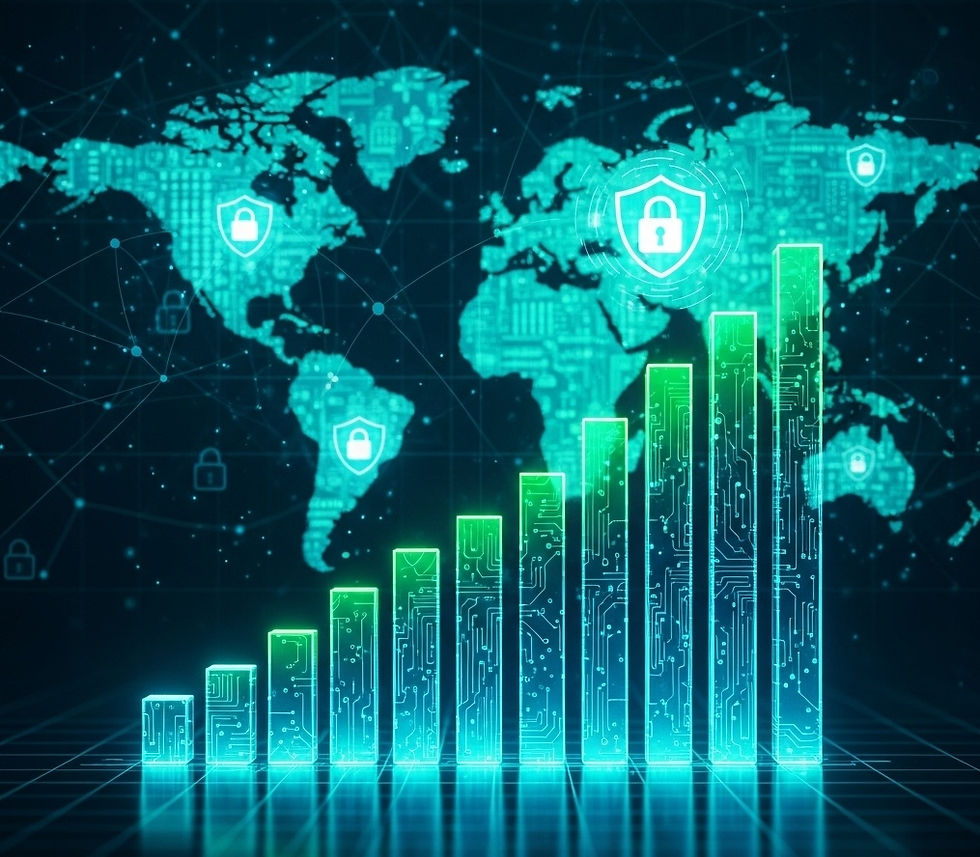Anticipated $213 Billion Global Cybersecurity Spend in 2025
- Dean Charlton

- 3 days ago
- 2 min read
The world of cybersecurity is witnessing an unprecedented surge in investment, with global spending projected to hit an astounding $213 billion in 2025.
This massive increase, a significant jump from 2024's $193 billion, underscores the escalating digital threats and the proactive measures organisations are taking to fortify their defenses. This upward trend shows no signs of slowing, with estimates suggesting a further 12% increase to $240 billion in 2026. The United Kingdom, in particular, is set to see a dramatic rise, with end-user spending expected to skyrocket by 30%.
Several critical factors are fueling this spending spree. Rising cybercriminal activity, the complex landscape of regulatory compliance, and the pervasive integration of Artificial Intelligence (AI) are all contributing to the heightened demand for robust cybersecurity solutions. A prime example of this increased appetite is the security software sector, which is forecast to grow from approximately $95 billion in 2024 to $121 billion by 2026.
A significant driver behind this growth is the concerted effort by enterprises to enhance their cloud security capabilities, especially as AI workloads become more prevalent. As organisations navigate various stages of their cloud journeys, their security needs evolve. This includes securing application development within cloud environments, protecting data and workloads stored in the cloud, and rigorously testing third-party applications. The emergence of AI has added another layer of complexity, demanding specific configurations and runtime requirements to ensure its secure deployment. Experts anticipate this segment will continue its rapid expansion as more businesses embrace and secure their AI initiatives.

Beyond software, spending on security services has also seen consistent growth, rising from $77 billion in 2024 to an estimated $92.7 billion by 2026. This category encompasses a wide array of support, including managed services and assistance from third-party vendors. A primary catalyst for this increased reliance on external providers is the persistent cybersecurity skills gap. Organisations are increasingly turning to managed security services to compensate for a lack of in-house talent, a problem that continues to plague the industry despite rising threats.
The trend of relying on Managed Service Providers (MSPs) is becoming more pronounced, with even mature organisations seeking specialised skills that are difficult to acquire internally. One emerging area demanding this unique expertise is cyber-physical systems security, particularly within operational technology (OT). Securing these industrial infrastructures requires a rare blend of cybersecurity knowledge and an understanding of industrial systems, presenting a unique and challenging security landscape.
As the digital world continues to expand and evolve, so too do the threats. The significant increase in cybersecurity spending is a clear indicator that organisations are recognising the vital importance of protecting their assets and operations in this increasingly complex environment.
Given these escalating investments and the evolving threat landscape, what steps do you believe organisations should prioritise to ensure they are getting the maximum return on their cybersecurity spending?




Comments